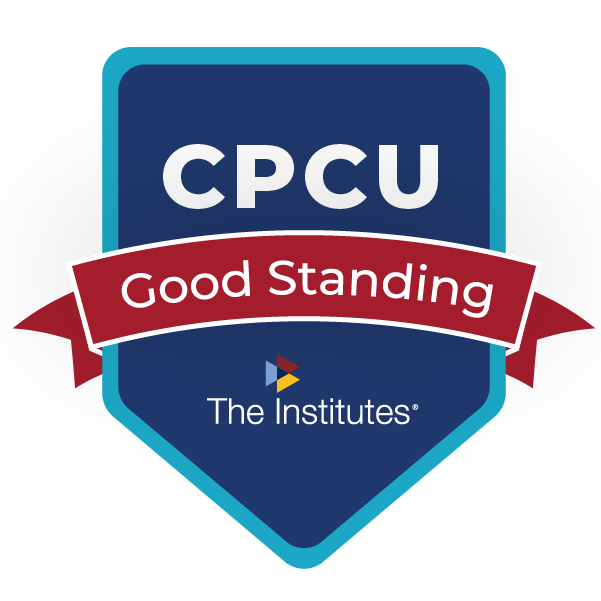Coronavirus Auto Injury Data
May 8, 2020 – Remember that credit you received on your auto insurance bill last month due to the anticipated lower claims costs since fewer people would be on the road during the coronavirus pandemic shelter-in-place orders?
Don’t be surprised if that ends rather quickly.
According to a recent article in Digital Insurance, a periodical aimed at senior insurance executives, those assumptions may have been faulty. (“Data may imply coronavirus auto-premium reductions were premature.”)

While there are certainly fewer vehicles on the road, it turns out many are traveling faster and perhaps feeling overly secure and paying less attention because of the low traffic, leading to more speeding tickets being issued and a higher fatality rate when crashes occur.
This can be especially problematic where 18-wheelers are involved. Speed + Mass + Collision usually = Very Bad Outcome.
This tracks with some of the conversations I’ve had recently with claims personnel and plaintiff attorneys. Overall, it’s too soon to know how all this will play out but all signs point toward the possibility of lower claims counts with higher severity until traffic patterns return to normal.
Until then, a timely reminder to be extra vigilant when driving during this pandemic.
Photo by Michael Jin on Unsplash
Posted: May 8, 2020 | by dan | Category: Articles, Blog, Structured Settlements | Comments Off on Coronavirus Auto Injury Data
Roubini has a bad feeling on this one, all right?
March 3, 2020 – Remember the line in Platoon when Sgt. O’Neill (John C. McGinley) expresses his concerns about a pending military conflict with Staff Sgt. Barnes (Tom Berenger)?
“Bob, I got a bad feeling on this one, all right? I mean, I got a bad feeling. I don’t think I’m gonna make it outta here! D’ya understand what I’m sayin’ to you?”
Sgt. Red O’Neill
While the prospects of seeing one’s entire life savings evaporate due to fallout from a global pandemic pale in comparison to the psychological trauma experienced by the brave men and women who experience the harsh realities of war, this line came to mind when I read yesterday’s MarketWatch article quoting economist Nouriel Roubini who sees bad things ahead for the market.
“I expect global equities to tank by 30% to 40% this year.”
Nouriel Roubini
Investors may want to heed Roubini’s advice given he was one of the few economists to correctly predict the 2008 financial crisis. To avoid financial catastrophe, Dr. Roubini is urging people to seek safety NOW.
And he’s not the only one doing so. About a year and a half ago, we published a blog citing other experts suggesting clients may also wish to pare down their exposure to stocks in favor of safer options.
Where Can You Find Safety?
In addition to buying safe bonds, structured settlements and retirement annuities remain some of the safest choices for those who require certainty.
Even with interest rates at or near historic lows, structured settlements and retirement annuities remain attractive alternatives. Something about making some money (especially when there’s a decided tax advantage) is more attractive than losing a lot of money.
Consider all these available options clients are currently talking to us about:
Tax-free structured settlements for physical injuries.
Tax-deferred structured settlements for nonphysical injuries.
Tax-efficient structured installment sales to reduce or eliminate capital gains taxes when selling qualifying appreciated assets or businesses.
Fixed indexed annuities which allow participants to benefit from market ups but shield them from market downs.
Market indexed structured settlement options with downside protection.
A structured settlement option that accounts for future interest rate increases.
Multi-Year Guaranteed Annuities (MYGAs) for “better than CD” rates.
Even if you still have faith in the market for the long-term, almost everyone would be wise to consider converting at least some of their safety net to something that is actually safe.
And if Dr. Roubini ends up being right, there’s no time like the present to make a move before things get really bad.
Let us know if we can help save you from drowning.

Posted: March 3, 2020 | by dan | Category: Blog, Retirement, Structured Sales | Comments Off on Roubini has a bad feeling on this one, all right?
Structured Settlements: Structured Installment Sales
Eleventh in a series of blog posts dedicated to helping clients decide when a structured settlement should be considered.

Today’s Installment (npi): Structured Installment Sales
February 5, 2020 – For this segment in our series of educational offerings, we’re going off-topic slightly because we wish to present a structured settlement offshoot product designed to help clients defer and sometimes eliminate capital gains taxes when selling qualifying appreciated assets: Structured Installment Sales.
Be sure to visit our companion site: MyStructuredSale.com
Real estate investors, business owners, property owners, and the realtors, business brokers, lawyers and accountants who represent and advise them will find this simple-to-implement alternative to traditional sales worthy of their time.
As any accounting major can tell you, deferring taxes and accelerating deductions is one of the fundamental tenets of accounting.
Structured installment sales help conveniently with the deferring taxes part of that formula.
The process is simple:
Step 1: Buyer and seller negotiate a price for the property or business.
Step 2: Seller decides how much of the net settlement proceeds to defer.
Step 3: Seller contacts a firm specializing in structured installment sales annuity quotes. (We hear Finn Financial Group is pretty good!)
Step 4: Terms of the structured installment sale are incorporated into the sales agreement and closing documents.
Step 5: At closing, all relevant documents are executed, and the funds dispensed to the appropriate parties.
Although Treasury regulations have permitted installment reporting for taxes since 1918, it wasn’t until 1980, when Congress passed Public Law 96-471, that Section 453 of the Internal Revenue Code was modified laying the foundation for what would become known as Structured Installment Sales. Publication 537 contains information on installment sale eligibility requirements.
In 2005, Allstate Life, in an effort to explore expanded applications for structured settlements, researched a utilization in the appreciated asset world and rolled out a product they called a structured sale. Prudential soon followed but just as the concept was beginning to gather major traction, the Great Recession hit wiping out investment equity and the opportunity to defer taxes with it.
Now, with property values up over the past decade, this tax deferring option is poised for a major resurgence. So much so that one of the largest insurers in the world, MetLife, has chosen to offer Structured Installment Sales through its specialized, appointed agency force.
Click [HERE] to watch MetLife’s 1:12 promotional video on the topic.
Structured installment sales are also available through Independent Life as well as an option funded by U.S. Treasuries.
When a structured installment sale is being considered, the parties involved need to be cognizant of a few basic rules:
A decision to defer sales proceeds must be made prior to finalizing any sales agreement to avoid constructive receipt;
Terms of the deferral should be incorporated into any sales agreement;
Plan design and deferral options may be limited;
Buyer and seller must execute certain required documents prepared by the firm implementing the structured installment sale;
The annuity must be funded directly by or on behalf of the buyer through the closing process.
The Tax Cuts and Jobs Act gives even added incentives for certain taxpayers to defer recognition of gain into future years. Those contemplating selling any qualifying appreciated asset would be well-advised to consider doing so via the structured installment sale method.
Unless they like paying taxes you can otherwise avoid.
Posted: February 5, 2020 | by dan | Category: Blog, Structured Sales, Structured Settlements | Comments Off on Structured Settlements: Structured Installment Sales
World’s Largest Insurers
February 3, 2020 – Of the Top 25 largest insurers in the world in terms of (2108) non-banking assets, five of them are domiciled in the United States. (“Best’s Review,” February 2020, p. 27)
Those who resolve their personal injury claims and lawsuits with structured settlements can take comfort in knowing that all five of these well-capitalized American markets or their affiliates are active in the structured settlement marketplace. Their ranking and total assets in USD follow.

World’s Largest Insurers:
3 – Prudential Financial, Inc. – $815,078,000,000
5 – Berkshire Hathaway Inc. – $707,794,000,000
6- MetLife, Inc. – $687,538,000,000
17 – American International Group, Inc. – $491,984,000,000
25 – New York Life Insurance Company – $339,144,000,000
That’s a lot of financial security for those who are dependent upon future payments to meet ongoing healthcare and living needs.
Structured settlements were created to help accident survivors manage their lives with peace of mind that they’ll have the funds in the future when they’re needed.
With excellent companies like these and the handful of additional highly rated life markets providing safety and security reassurance, the industry is poised for many more successful years of making peoples’ lives better.
THANK YOU to our life company partners for their commitment to the structured settlements industry.
Posted: February 3, 2020 | by dan | Category: Blog, Structured Settlements | Comments Off on World’s Largest Insurers
Recognizing a Noble Profession
This Week We’re Celebrating:

What’s that you say? Didn’t know such a holiday existed?
Don’t feel too bad. According to Google (and every other source I could think to consult), it doesn’t.
That’s why I invented it in 2013.
Full Disclosure: I’m from a family of insurance professionals. Add up the claims service of my dad, brother, wife, step-daughter, a couple family godparents and myself, we have dedicated more than 150 years to the insurance industry.
 Even if Hallmark never designs a new card to honor the occasion and I’m the only one who ever celebrates it, I plan to set aside this week for the remainder of my career to pay homage to the fine men and women who toil in the claims departments of America each and every day of the year.
Even if Hallmark never designs a new card to honor the occasion and I’m the only one who ever celebrates it, I plan to set aside this week for the remainder of my career to pay homage to the fine men and women who toil in the claims departments of America each and every day of the year.
And I’m making it a week because it deserves to be more than a measly day given all they have to deal with throughout the year. I know. I’ve been there.
Why do this? A couple of reasons:
They Make The World Go ‘Round
Take a moment to think about all the people, in addition to those for whom insurance coverage is provided, whose lives are enriched because of the work claims representatives perform:
- Contractors who repair physical damage,
- Doctors who treat those with physical injuries,
- Attorneys who represent clients involved in the settlement process,
- Shareholders, Mediators, Car Dealers, Manufacturers,
- Consultants, and Vendors of every stripe imaginable.
It’s impossible to quantify exactly how much economic activity is generated simply because claims professionals do their job. Suffice it to say that it’s probably . . . “a lot!“
The Job Requires Skill In Multiple Disciplines
A claims professional is the quintessential “Jack of All Trades.” At various times, they wear multiple hats which can make it hard to differentiate them from numerous other professionals such as:
Banker – Counselor – Pastor – Lawyer – Appraiser – Mathematician – Researcher – Investigator – Mediator – Politician – Time Management Specialist – Physicist -Philosopher – Educator – Statistician – Communications Expert – Interpreter – Etc.
 Claims departments frequently draw from a talent pool which contains people from a wide variety of interests and college majors which results in a broad background of experience.
Claims departments frequently draw from a talent pool which contains people from a wide variety of interests and college majors which results in a broad background of experience.
In fact, many smart plaintiff law firms and other businesses often hire ex-claims professionals because they value their skills and training so highly.
It’s a Noble Profession That Helps People
Claims professionals serve as the conduit between a suffered loss and recovery.
Unfortunately, money is the only medium available that can help restore an individual to their pre-accident condition following a covered loss. And quantifying intangible damages is an impossible task at best. Consider:
- What value can you really ever put on the life of a child who’s been killed?
- How can money replace the memories of a home destroyed by fire?
These are among the many challenges claims professionals confront each and every day. And they do so in spite of the fact that they often garner about as much respect as an offensive right guard on a football team for their efforts.
Theirs is NOT an easy job by any stretch of the imagination.
But ask any person who’s ever been aided by a Catastrophe Duty Claims Professional how appreciative they were when the insurance representative showed up, check in hand, to help appraise and pay for their loss.
Ask anyone’s who has ever accepted a structured settlement when settling a physical injury claim how glad they were to receive guaranteed future income that is 100% income tax-free.
There are countless other examples of appreciation people feel each and every day for claims service even if it’s very rarely expressed as often as it should be.
 So here’s to you, Claims Professionals. This week we pause to salute you by saying simply
So here’s to you, Claims Professionals. This week we pause to salute you by saying simply
“Thank You!”
for doing what you do.
We hope you are as proud of your contribution to society as we are of the the service you provide that helps so many.
Best wishes to all of you for continued success in your careers and your life!
Posted: January 29, 2020 | by dan | Category: Articles, Blog, Newsletter, Structured Settlements | Comments Off on Recognizing a Noble Profession
Structured Settlements: Contractual Agreements
Tenth in a series of blog posts dedicated to helping clients decide when a structured settlement should be considered.

Today’s Installment: Contractual Agreements
January 16, 2020 – As the applications of the structured settlement concept continue to evolve, potential clients and practitioners should be aware of the less traditional, but equally valuable, opportunities to satisfy certain contractual agreements (or, more frequently, disagreements) by adapting the nonqualified assignment process we’ve discussed in previous posts.
Business disputes, mergers, acquisitions, divestitures, and a host of other situations may lend themselves to more favorable outcomes for all involved when a nonphysical injury structured settlement is considered.
Key to a successful outcome will be the ability to craft an agreement outlining that one party (the Payor) is obligated to pay future periodic payments to another party (the Payee) in order to satisfy a financial obligation.
Because the Payor will not usually want to remain contingently liable for any future financial commitment, the parties agree to permit the Payor to satisfy its obligation to pay future income by purchasing an annuity or U.S. Treasury-backed obligation and substituting obligors using an independent third party assignment company established for such a purpose.
Since the assignment companies accepting these obligations are not able to handle assignments involving wages, payees CANNOT receive structured settlement payments that are considered W-2 income. As such, all future payments will be processed as 1099 income and will be reported as such.
The Payor and Payee usually have divergent interests when it comes to the income being paid when finalizing contracts.
Paying a single lump sum to satisfy its end of the agreement will leave the Payor in a better position to move forward without any contingencies or encumbrances in dealing with the other party.
The Payee, on the other hand, will usually be better served by spreading the income and corresponding tax liability over a longer period of time.
Ergo, the nonqualified assignment process permits both sides to accomplish their objectives. The parties can settle for a single lump paid by the Payor which is used to purchase a more tax-efficient outcome for the Payee.
Business lawyers, business owners, executives, investors, and others who familiarize themselves with nonqualified assignment structured settlements can create more flexible contractual outcomes than is otherwise possible with the more common single lump-sum or short-term payout agreements.
Although the term has fallen out of vogue in recent years, nonphysical injury structured settlements present opportunities for win-win resolutions and should be explored anytime someone can benefit by receiving money over time.
Photo courtesy of Mari Helen on Unsplash
Posted: January 16, 2020 | by dan | Category: Blog, Structured Settlements | Comments Off on Structured Settlements: Contractual Agreements
Structured Settlement Market Strength

September 11, 2019 – As volatile markets continue to spook some investors while inspiring others, we take pleasure in being able to constantly reassure our clients they make wise decisions and are in good company when they choose structured settlements and retirement income annuities.
Safe. Steady. Secure. Strong. That’s what we’re all about.
In addition, according to LIMRA Secure Retirement Institute, the guaranteed future income options we offer our clients are also quite popular!
Structured Settlements: Income Strong
With over 1,000 years of combined experience, the life markets offering structured settlements have unparalleled strength and staying power.
So how strong and popular are the structured settlement life markets we represent?
Four of them account for approximately 30% of the $93.6 BILLION worth of annuity purchases through the second quarter of 2019 and boast Top Ten rankings from the aforementioned LIMRA study referenced above.
AIG Companies – 1st ($10,221,715,000)
New York Life – 4th ($7,196,481,000)
Prudential – 7th ($5,367,321,000)
Pacific Life – 8th ($5,209,920,000)
That’s a high vote of confidence and speaks to the public’s appetite for safety, security and financial strength when it comes to preserving their money.
Congratulations to these excellent companies on their success. We are proud to represent you along with the other fine companies who comprise the structured settlement marketplace.
On a Somber Note: The infamy surrounding today’s date will never leave us.
It shouldn’t.
Even those of us without a direct personal connection to the tragic events of one of the worst horrors ever perpetrated on American soil felt its devastation and continue to live with its consequences.
Today, we honor those who died as a result of that unspeakable tragedy and offer thoughts of peace for their families.
Posted: September 11, 2019 | by dan | Category: Blog, Retirement, Structured Settlements | Comments Off on Structured Settlement Market Strength
Structured Settlements: Fire Losses
Ninth in a series of blog posts dedicated to helping clients decide when a structured settlement should be considered.

Today’s Installment: Fire Losses
August 27, 2019 – The vast majority of claims and lawsuits requiring structured settlements involve some form of personal, physical injury.
Structured settlements can come in handy when resolving a wide variety of non-injury claims, however, and fire damage losses represent one such category of claims.
Sometimes fire damage is limited to a single residence or building and a homeowners policy is sufficient to fully compensate the owner.
Other times, wildfires cover tens of thousands of acres, claim the lives and property of large numbers of people and cause billions of dollars’ worth of damage.
Not surprisingly, lawsuits for negligence are often alleged when major fire losses occur and, because of the often-wide disparity between damage and available coverage, understanding the tax complexities stemming from these losses and how best to approach resolution become chief considerations.
Are Taxes Owed on Fire Loss Claims?
One of our firm’s favorite tax resources is anything published by Robert W. Wood, a nationally recognized tax attorney specializing in matters of taxation as they pertain to physical and non-physical injury settlements and verdicts.
An excerpt from his popular Tax Alert series recently teed up this topic for us in “How IRS Taxes Fire Victims.”
An oversimplified version of the tax treatment applied to fire losses can be gleaned by examining a fundamental tenet of tax liability, to wit: to the extent recovery from a loss does not exceed the pre-fire value of the property, any money recovered via a settlement or verdict should be a non-taxable event.
But as Rob’s summary makes clear, it’s best not to assume since different rules apply to different situations and there can be much to consider.
Punitive damages might also be awarded in some fire damage lawsuits if a jury finds sufficient evidence to determine the defendant’s conduct warranted them. In such instances, a verdict could easily push the recovery well above the replacement cost of the property and create even more tax challenges for the property owner.
Non-qualified Assignments
Structured settlements for non-physical injury claims such as fire losses are usually accomplished using a non-qualified assignment process which permits the settling defendant to close its file when the claim is concluded while permitting the plaintiff to defer recognition of portions of the settlement into future years.
Deferring income and any accompanying taxes into future years is a recognized strategy as old as the tax code itself. Structuring fire losses can create tax efficiency for the plaintiff and frequently permits polarized parties to resolve differences when negotiation stalemates occur.
Last year’s Camp Fire in Northern California was one of the deadliest wildfires ever recorded. Pacific Gas & Electric (PG&E) is at the center of liability theories for losses stemming from this destructive wildfire. The law firm of Walkup, Melodia, Kelly & Schoenberger is one of several firms representing impacted individuals and families of the Camp Fire and provides regular updates on the litigation.
It’s worth mentioning that many fire losses will also involve a component of personal, physical injury. In addition to loss of life, many individuals who survive fires suffer burns and respiratory damage as a result of smoke inhalation. Fire losses causing such personal, physical injuries would qualify as tax-free damages under 26 U.S.C. § 104(a)(2).
It’s not unreasonable to expect some fire losses might result in a combination of tax-free and taxable damages being paid when the claim or lawsuit is resolved. In those instances, qualified tax advice should always be at the forefront of one’s resolution strategy.
Posted: August 27, 2019 | by dan | Category: Blog, Structured Settlements | Comments Off on Structured Settlements: Fire Losses
Structured Settlements: Medicare Secondary Payer Act
Eighth in a series of blog posts dedicated to helping clients decide when a structured settlement should be considered.

Today’s Installment: Medicare Secondary Payer Act
August 13, 2019 – If there’s one area of claims resolution where structured settlements attain near universal acceptance, it’s when they are used in conjunction with settling a claim impacted by the Medicare Secondary Payer Act (MSP).
In 1980, when Congress passed the Medicare Secondary Payer Act, U.S.C. § 1395y(b), the goal was a simple and noble one: Protect the Medicare trust fund by prohibiting payment for medical services which have “been made or can reasonably be expected to be made” by a primary payer.
For about 20 years, few gave much thought to the reality that workers’ compensation and liability claims were being settled every day without even considering Medicare’s interests, creating de facto lawbreakers since many settlements involved such payments.
Even when liens for past medical costs absorbed by Medicare began to be taken seriously, future care stemming from the compensable injury and upon which the settlement value was determined, was ignored resulting in many injured workers or plaintiffs “double dipping.”
Medicare Set-Asides
To avoid shifting responsibility for future injury-related care to the secondary payer, Medicare, a cottage industry emerged offering a solution: Medicare Set-Aside (MSA) arrangements.
Companies specializing in evaluating an individual’s future accident-related medical care review the case to recommend an allocation which should be attributed to protecting Medicare’s interests. The settling parties, then, should “set aside” these funds from any settlement to ensure all are meeting their compliance requirements under the law.
Commonplace in most workers’ compensation claims, the usage of MSAs in liability settlements has grown in recent years.
Sometimes the parties opt to secure approval from the Centers for Medicare & Medicaid Services (CMS) before concluding their settlements while some companies will guarantee their evaluations and agree to hold the parties harmless if CMS refuses to honor their evaluation.
Structured Settlements Save Money
When MSAs are procured, the settling parties can choose to satisfy their MSP obligation by paying the recommended single lump sum or by providing two years’ worth of “seed money” followed by a series of annual payments for a specified period of time.
While the single lump sum option is typically the better choice on smaller (under $25,000) MSAs, substantial savings can be realized by opting for the annuitized option as the MSA increases in value.
Quantifiable savings: On the last dozen cases our firm has quoted, we’ve been able to demonstrate an average 20.37% savings on the cost of funding the MSA.
Whether the savings realized by structuring an MSA is used to reduce the overall cost of the settlement or to increase the net, non-MSA recovery to the plaintiff/claimant, there’s no denying the value of this excellent claims resolution tool.
And as MSAs become increasingly prevalent, expect claim settlement cost efficiency and fairness to strengthen.
For further reading: “A Good Fit”
Posted: August 13, 2019 | by dan | Category: Articles, Blog, Structured Settlements | Comments Off on Structured Settlements: Medicare Secondary Payer Act
Structured Settlements: Special Damages
Seventh in a series of blog posts dedicated to helping clients decide when a structured settlement should be considered.

Today’s Installment: Special Damages
July 17, 2019 – Like wine & cheese, Rodgers & Hammerstein, peanut butter & jelly, and countless other famous pairings, certain combinations are greater than the sum of their parts.
Special damages & structured settlements are such a match made in heaven.
“They go together like a horse and carriage
This I’ll tell you brother
You can’t have one without the other”
When resolving personal injury disputes, too many practitioners resort to simply tallying up damage claim numbers and consolidating the result into a single lump sum, sometimes not even reduced to its estimated present value.
This approach, while easy, fails to properly address the underlying concerns of those who’ve been injured:
Future security and a return to some semblance of normalcy
Serious accidents can result in immediate and harsh change of financial circumstances for individuals and their families when injuries are severe. An unwelcome new reality awaits many, stemming not just from one’s oft-compromised ability to earn a living, but from the cost of medical care required to treat the ensuing injury or condition.
Special damages: Damages that compensate the plaintiff for quantifiable monetary losses such as medical bills and the cost to repair damaged property (direct losses) and lost earnings (consequential damages). Distinguished from general damages, for which there is no exact dollar value to the plaintiff’s losses. (Definition from Nolo’s Plain-English Law Dictionary)
Those with physically demanding jobs may be unable to return to their previous position. A construction worker with shattered vertebrae. A truck driver with right foot paralysis. A neurosurgeon with an arm amputation. While not all accidents result in permanent injury, many struggle to make ends meet following life-altering mishaps.
For those injured on the job, indemnity and medical benefits afforded by the workers’ compensation system provide a welcome, if imperfect, remedy allowing the injured person to receive necessary medical treatment and continue meeting some of their monthly financial obligations.
For others, because recovery is dependent upon the circumstances causing the accident and available insurance coverage, the road back to financial stability can be long and stressful.
When evaluating an insurance claim or lawsuit for value, special damages are more easily quantified than their compensatory damage counterpart, general damages. And because of their unique ability to help address these needs, structured settlements are usually the best option for the parties to consider.
Why Structure Specials?
It may seem quaint in today’s world but structuring an individual’s future wage loss and medical care is simply the right approach to helping a person maintain their pre-accident lifestyle as best they can.
A person can maintain their dignity when they have ongoing resources to take care of themselves and their families despite a change in physical circumstances.
A single mother of two unable to return to her job as an airline pilot is better served, not by a single lump sum of cash, but by crafting a settlement plan which pays anticipated income she likely would have earned over her career had she not been injured.
Lump sums can be squandered.
Lump sums can be mismanaged.
But replicating income puts the injured party on solid financial footing serving her family better. Especially when the future income is tax-free (physical injury cases) and guaranteed by some of the most secure companies in the world as is the case with structured settlements.
Further, such needs-based settlement evaluations serve several important purposes:
It allows the settling parties to address certain anticipated future needs more realistically than a lump sum ever could;
Matching future needs with future dollars permits negotiating parties to set aside that which they can agree upon allowing important dialog on non-economic matters to continue;
A lump sum is just a number whereas guaranteed income over time represents a paycheck, insurance premiums, rent or mortgage payments, etc.
We don’t live in a lump sum world so why try to meet future needs with a lump sum today? By personalizing the resolution with a structured settlement, a better outcome is achieved by all involved.
Study after study reveals how strongly people feel about guaranteed, annuitized income. Social security beneficiaries, pension recipients and annuity owners report very high levels of satisfaction with their guaranteed cash flows.
Don’t those whose lives have been turned upside down by an accident deserve the same chance at happiness?
Although you technically can have one without the other, resolving a special damages lawsuit without a structured settlement is far less desirable than linking the two together come time for settlement.
“Try, try, try to separate them
It’s an illusion
Try, try, try, and you will only come
To this conclusion”
Like the song says, they’re just right for each other.
“Love and Marriage” lyrics by Sammy Cahn and Jimmy Van Heusen
Posted: July 17, 2019 | by dan | Category: Blog, Structured Settlements | Comments Off on Structured Settlements: Special Damages

















